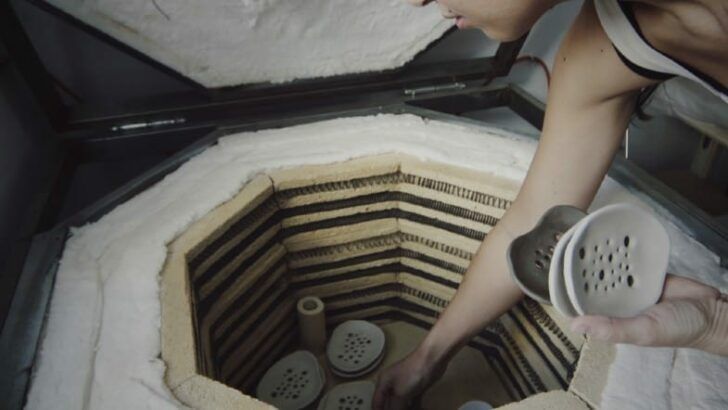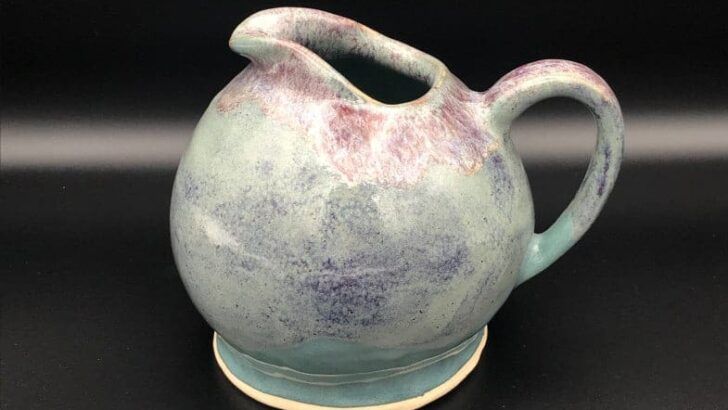Can I Have A Pottery Kiln At Home?
A pottery kiln is an essential piece of equipment for any potter or ceramic artist. Kilns are used to fire clay and ceramic pieces to permanently harden them through a process called vitrification. There are several types of kilns available, ranging from small tabletop kilns to large industrial-sized kilns. When used properly, a kiln allows potters to precisely control the temperature and conditions inside to produce consistent results.
Many hobbyist potters dream of having their own home pottery studio complete with a kiln. While it’s certainly possible to have a kiln at home, there are some important factors to consider first when determining if a home kiln is right for your needs. This article provides an overview of the key considerations around purchasing and operating a pottery kiln at home. We’ll explore the types of kilns, placement, ventilation, safety, regulations, costs, and more to help you decide if a home kiln is worthwhile.
Types of Kilns
There are several main types of kilns commonly used for firing pottery at home:
Electric kilns – These kilns use electricity to generate heat through heating elements. They are very popular for home use due to being self-contained, reliable, and having automatic controls. Electric kilns allow for precise temperature control. Some disadvantages are higher energy costs and potential electrical issues. (Source)
Gas kilns – Gas kilns use propane or natural gas to produce heat through gas burners. They heat up quickly and allow for atmospheric effects. Gas kilns can mimic the effects of wood firing. However, gas kilns require ventilation and have higher operating costs. There are more safety considerations as well. (Source)
Wood-fired kilns – Also known as woodburning kilns, these kilns use wood as fuel to generate heat. The wood smoke can create unique effects on the pottery. Wood-firing requires constant stoking and monitoring. It is more labor-intensive but appeals to those seeking an organic, traditional firing process. Wood kilns are less common for home use due to space needs and permitting issues. (Source)
Kiln Size and Power
When selecting a kiln for home use, the two main factors to consider are the size and power requirements. Most small hobby kilns range from 1-6 cubic feet in internal volume. Kilns under 1 cubic foot can generally be powered by a standard 120V household outlet. However, anything larger will require special wiring to provide more power (Big Ceramic Store).
For a beginner hobbyist, a 1-3 cubic foot front-loading kiln is recommended, as these provide enough space for small projects while remaining relatively affordable and easy to operate. Popular entry-level models like the Evenheat KM-3 and Skutt KM-1 measure around 2.5 cubic feet (Soul Ceramics). These kilns typically draw 15-20 amps at 120V. Many homes already have appropriate outlets, but an electrician may need to install a dedicated circuit.
Larger kilns from 4-6 cubic feet require more power, typically 240V at 30-50 amps. These industrial-strength models allow firing more pieces at once for advanced hobbyists and small commercial operations. However, the electrical work and ventilation required makes them less practical for most home settings (Kiln Arts).
Kiln Placement
When choosing where to put a kiln in your home, the garage or basement are usually the best options. According to The Pottery Wheel, suppliers often recommend locating your kiln in a basement or garage because these spaces are relatively large and allow for proper ventilation of gases and heat. A kiln should never be placed in a small enclosed room.

Ceramic School notes that garages and basements are preferable because they are more isolated from the living space of a home. This helps prevent issues with smoke or fumes entering the inhabited areas (Ceramic School). A shed or outbuilding is another good kiln location for the same reasons of size and isolation.
Regardless of location, be sure there is adequate space around the kiln for accessing the door and providing ventilation. Choose a spot away from flammable materials. The floor should be a noncombustible material like concrete. Proper placement is key for operating a kiln safely at home.
Ventilation
Proper ventilation is extremely important when operating a kiln at home to remove harmful fumes. When firing clay, glazes and other materials, toxic gases are released that can be hazardous if allowed to accumulate in an enclosed space. According to the Kiln Vent Guide, a kiln vent hood relies on having adequate makeup air flow into the room to properly ventilate fumes outside.
Industry recommendations suggest having room ventilation of at least 10-25 times the cubic feet of the kiln per hour. For a 10 cubic foot kiln, you would need 250 cubic feet of ventilation per hour. This can be achieved through open windows, doors, or powered ventilation like exhaust fans. Proper ventilation protects you from breathing in dangerous fumes and prevents gases from building up to explosive levels. Planning appropriate ventilation is a critical safety consideration before installing a kiln at home.
Safety
Operating a kiln at home requires taking proper safety precautions. The high heat can pose risks of burns, fire, and toxic fumes. Following basic guidelines can help ensure safe firing.
Fire prevention is critical when running a home kiln. Be sure to place the kiln at least 18 inches from any combustibles, and do not put flammable items on or near the kiln (Source). Monitor the kiln temperature and do not exceed the kiln’s maximum rating. Use kiln furniture designed for high temperatures and carefully load shelves to allow proper air flow.
Follow electrical safety precautions as well. Shut off power to the kiln when not in use and routinely inspect the power cord for damage. Only use the factory-installed cord and plug, and avoid using an extension cord. Install ground-fault protection on the kiln’s electrical circuit (Source).
Never leave the kiln unattended during firing. Stay alert and watch for signs of potential issues like smoke or strange sounds. Keep a fire extinguisher and heat-protective gloves on hand. Allow adequate ventilation in the kiln area.
Zoning Laws
Before installing a kiln at home, it’s crucial to check your local zoning laws and homeowner’s association rules to ensure kilns are permitted. Most areas allow kilns under certain conditions, but some neighborhoods prohibit them entirely. According to the American Ceramic Society, zoning laws regarding kilns vary widely between rural, suburban, and urban areas.
In rural zones with large property lots, kilns may be freely permitted. Suburban areas tend to be more restrictive, often requiring special permits. Major cities sometimes ban kilns entirely within city limits due to smoke and fire concerns. The only way to know your local laws is to check with your city planning office or homeowners association before purchasing a kiln.
Zoning officials will want information on the kiln’s power source, size, location on the property, and potential fire hazards. Having this information ready can smooth the permit approval process. If your area restricts kilns, you may be able to get an exemption by demonstrating safe installation procedures and fire prevention plans.
Insurance
Installing a pottery kiln at home can impact your homeowner’s insurance in a few key ways. Many standard policies do not cover damage from a kiln, so you may need to add a special rider or endorsement to be fully protected. According to discussions on sites like Reddit, most insurance companies will require an additional rider when installing a kiln at home.
The rider provides coverage for any damage caused by kiln use, like fire or smoke damage. Without it, you could be liable for extensive repairs in the event of an incident. The cost of the rider varies, but expect an increase in premiums around $200-300 per year. Some homeowners have reported more significant increases from companies uncomfortable with the added risk.
It’s advisable to disclose plans to install a kiln when shopping for new insurance or making policy changes. Being upfront allows the insurer to factor in the presence of a kiln when calculating premiums. Attempting to hide the kiln’s existence could potentially void coverage if damages do occur.
Besides contacting your insurance provider, check local regulations about kilns in residential areas. Some municipalities restrict their use or require special safety accommodations. Addressing zoning, permits, ventilation and fire suppression ahead of time will make getting insurance coverage much simpler.
Cost
The upfront cost of purchasing a kiln for home use can range from around $600 for a small tabletop kiln to over $2,000 for a large capacity kiln suitable for an avid hobbyist or small production studio. According to KilnFrog, models designed for household use and operating on a standard 120-volt outlet fall within $600-$2,500. Larger kilns with 208/240-volt connections can cost $3,000-$15,000.
Ongoing electricity usage is another major cost factor. Firing a kiln requires significant power, especially for larger models running at high temperatures. Operating costs depend on the kiln’s wattage rating and your local electricity rates. For example, firing a medium 1,300 watt kiln for 12 hours could use around 15 kWh of electricity. At an average rate of $0.14/kWh, that’s over $2 per firing session. Frequent use adds up over time, so consider your firing schedule when budgeting electricity costs. Energy efficient kilns with insulation can provide some savings.
Is It Worth It?
There are certainly pros and cons of having your own pottery kiln at home versus using a shared studio space or paying to have pieces fired elsewhere.
Some of the potential advantages of a home kiln include:
- Convenience – Being able to fire whenever needed without transporting work or scheduling studio time.
- Cost savings – Avoiding studio rental fees and firing charges in the long run.
- Control – Having full control over firing schedules, temperatures, etc.
- Faster process – No waiting for pieces to be scheduled by someone else.
However, there are also some drawbacks such as:
- Upfront investment – Kilns, especially large ones, can be very expensive to purchase and install.
- Operating costs – Paying for increased electricity usage.
- Safety issues – Proper ventilation, insurance, etc. need consideration.
- Maintenance – Kilns require care to keep them in firing condition.
- Space limitations – Kilns take up significant space that could be used for studio work.
Overall, a home kiln is a major investment but can pay off over time if you plan to fire frequently. For beginners or hobbyists, using shared studio kilns may be the most practical approach before taking on the commitment of owning your own.





